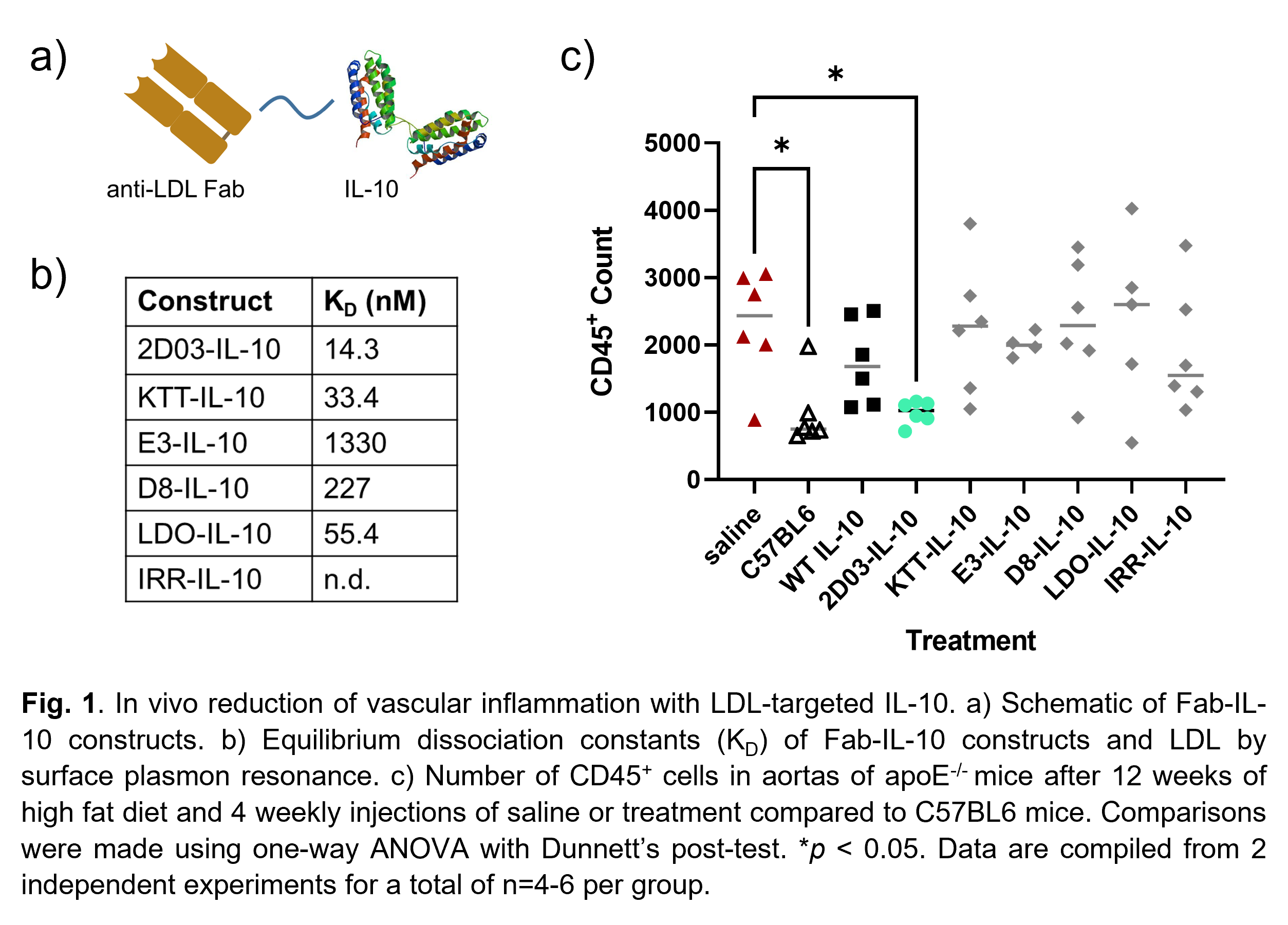(251e) Targeting IL-10 to Atherosclerotic Plaques Reduces Vascular Inflammation
AIChE Annual Meeting
2022
2022 Annual Meeting
Food, Pharmaceutical & Bioengineering Division
Biomolecular Engineering and the Immune System
Tuesday, November 15, 2022 - 9:12am to 9:30am
Methods: To overcome these challenges, we engineered constructs that target atherosclerotic plaques by fusing IL-10 to an antibody fragment (Fab) that binds LDL. We expressed six different Fab-IL-10 constructs: five with Fabs specific for LDL and one control Fab with irrelevant specificity (Fig. 1a).
Results: We validated the binding affinity of the constructs to LDL with surface plasmon resonance (Fig. 1b) and confirmed that IL-10 retains its bioactivity in vitro. We then conducted a screen of these constructs in hypercholesterolemic apolipoprotein E-/- mice. Our results showed that the total number of immune cells in the aorta was significantly reduced in the group treated with 2D03-IL-10 (Fig. 1c). The number of macrophages which contribute to plaque formation was similarly reduced. Importantly, neither wild type (WT) IL-10 nor IL-10 fused to the irrelevant Fab (IRR) showed any reduction of aortic immune cell infiltration.
Conclusions: We used biomolecular engineering techniques to target the cytokine IL-10 to atherosclerotic plaques. The 2D03-IL-10 fusion protein resulted in reduced vascular inflammation and has the potential to improve atherosclerosis disease outcomes.
